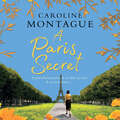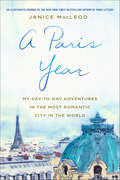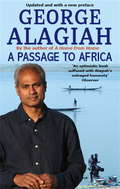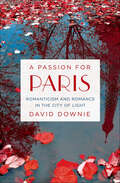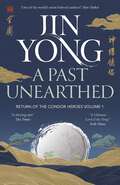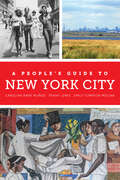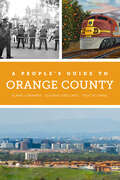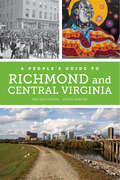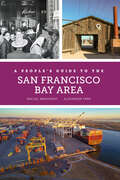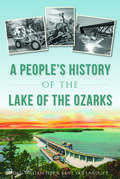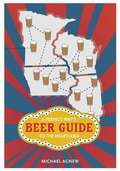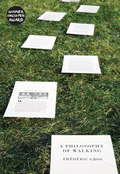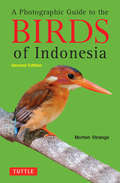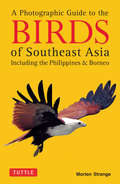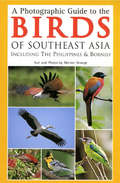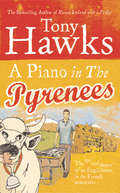- Table View
- List View
A Paris Secret: A heartbreaking historical novel of love, secrets and family
by Caroline MontagueA sweeping tale of ambition and passion in the shattered world of post-war Paris - perfect for fans of Santa Montefiore and Kate Furnivall1952. In the fragile atmosphere of post-war Paris, Sophie Bernot is training as a heart surgeon. A young woman in a man's world, Sophie is determined to bury her past and forge her medical career, whatever the costs.Across the channel, Sebastian Ogilvie is burning with ambition for his first architectural project. As his schemes lead him to France, and to a chance encounter with Sophie, his future seems full of promise. But when Sophie and Sebastian find themselves entangled in a brief, passionate affair, they each face a choice that will change their lives irrevocably, and a secret that will take years to be uncovered... Sweeping from Paris to London, to the snow-capped peaks of the Alps, this is an unforgettable story of passion, heartache and forgiveness.
A Paris Secret: A heartbreaking historical novel of love, secrets and family
by Caroline MontagueA sweeping tale of ambition and passion in the shattered world of post-war Paris - perfect for fans of Santa Montefiore and Kate Furnivall1952. In the fragile atmosphere of post-war Paris, Sophie Bernot is training as a heart surgeon. A young woman in a man's world, Sophie is determined to bury her past and forge her medical career, whatever the costs.Across the channel, Sebastian Ogilvie is burning with ambition for his first architectural project. As his schemes lead him to France, and to a chance encounter with Sophie, his future seems full of promise. But when Sophie and Sebastian find themselves entangled in a brief, passionate affair, they each face a choice that will change their lives irrevocably, and a secret that will take years to be uncovered... Sweeping from Paris to London, to the snow-capped peaks of the Alps, this is an unforgettable story of passion, heartache and forgiveness.
A Paris Secret: A heartbreaking new historical novel of love, secrets and family to read in 2020!
by Caroline MontagueA sweeping tale of ambition and passion in the shattered world of post-war Paris - perfect for fans of Santa Montefiore and Kate Furnivall1952. In the fragile atmosphere of post-war Paris, Sophie Bernot is training as a heart surgeon. A young woman in a man's world, Sophie is determined to bury her past and forge her medical career, whatever the costs.Across the channel, Sebastian Ogilvie is burning with ambition for his first architectural project. As his schemes lead him to France, and to a chance encounter with Sophie, his future seems full of promise. But when Sophie and Sebastian find themselves entangled in a brief, passionate affair, they each face a choice that will change their lives irrevocably, and a secret that will take years to be uncovered... Sweeping from Paris to London, to the snow-capped peaks of the Alps, this is an unforgettable story of passion, heartache and forgiveness.
A Paris Year: My Day-to-Day Adventures in the Most Romantic City in the World
by Janice MacLeodPart memoir and part visual journey through the streets of modern-day Paris, France, A Paris Year chronicles, day by day, one woman’s French sojourn in the world’s most beautiful city. Beginning on her first day in Paris, Janice MacLeod, the author of the best-selling book, Paris Letters, began a journal recording in illustrations and words, nearly every sight, smell, taste, and thought she experienced in the City of Light. The end result is more than a diary: it’s a detailed and colorful love letter to one of the most romantic and historically rich cities on earth. Combining personal observations and anecdotes with stories and facts about famous figures in Parisian history, this visual tale of discovery, through the eyes of an artist, is sure to delight, inspire, and charm.
A Parish Of Rich Women
by James BuchanTells of two societies at the point of collapse: an England clinging desperately to the wreckage of its history & Beirut under bombardment.
A Parrot in the Pepper Tree: A Sequel to Driving over Lemons
by Chris StewartChris Stewart's Driving Over Lemons told the story of his move to a remote mountain farm in Las Alpujarras - an oddball region of Spain, south of Granada. Funny, insightful and real, the book became an international bestseller.A Parrot in the Pepper Tree, the sequel to Lemons, follows the lives of Chris, Ana and their daughter, Chloë, as they get to grips with a misanthropic parrot who joins their home, Spanish school life, neighbours in love, their amazement at Chris appearing on the bestseller lists . . and their shock at discovering that their beloved valley is once more under threat of a dam.A Parrot in the Pepper Tree also looks back on Chris Stewart's former life - the hard times shearing in midwinter Sweden (and driving across the frozen sea to reach island farms); his first taste of Spain, learning flamenco guitar as a 20-year old; and his illustrious music career, drumming for his school band Genesis (sacked at 17, he never quite became Phil Collins), and then for a circus.
A Passage To Africa
by George AlagiahAs a five-year-old, George Alagiah emigrated with his family to Ghana - the first African country to attain independence from the British Empire. A PASSAGE TO AFRICA is Alagiah's shattering catalogue of atrocities crafted into a portrait of Africa that is infused with hope, insight and outrage. In vivid and evocative prose and with a fine eye for detail Alagiah's viewpoint is spiked with the freshness of the young George on his arrival in Ghana, the wonder with which he recounts his first impressions of Africa and the affection with which he dresses his stories of his early family life. A sense of possibility lingers, even though the book is full of uncomfortable truths. It is a book neatly balanced on his integrity and sense of obligation in his role as a writer and reporter. The shock of recognition is always there, but it is the personal element that gives A PASSAGE TO AFRICA its originality. Africa becomes not only a group of nations or a vast continent, but an epic of individual pride and suffering.
A Passage To Africa
by George AlagiahAs a five-year-old, George Alagiah emigrated with his family to Ghana - the first African country to attain independence from the British Empire. A PASSAGE TO AFRICA is Alagiah's shattering catalogue of atrocities crafted into a portrait of Africa that is infused with hope, insight and outrage. In vivid and evocative prose and with a fine eye for detail Alagiah's viewpoint is spiked with the freshness of the young George on his arrival in Ghana, the wonder with which he recounts his first impressions of Africa and the affection with which he dresses his stories of his early family life. A sense of possibility lingers, even though the book is full of uncomfortable truths. It is a book neatly balanced on his integrity and sense of obligation in his role as a writer and reporter. The shock of recognition is always there, but it is the personal element that gives A PASSAGE TO AFRICA its originality. Africa becomes not only a group of nations or a vast continent, but an epic of individual pride and suffering.
A Passion for Paris: Romanticism and Romance in the City of Light
by David Downie"A top-notch walking tour of Paris. . . . The author's encyclopedic knowledge of the city and its artists grants him a mystical gift of access: doors left ajar and carriage gates left open foster his search for the city's magical story. Anyone who loves Paris will adore this joyful book. Readers visiting the city are advised to take it with them to discover countless new experiences." —Kirkus Reviews (starred)A unique combination of memoir, history, and travelogue, this is author David Downie's irreverent quest to uncover why Paris is the world's most romantic city—and has been for over 150 years.Abounding in secluded, atmospheric parks, artists' studios, cafes, restaurants and streets little changed since the 1800s, Paris exudes romance. The art and architecture, the cityscape, riverbanks, and the unparalleled quality of daily life are part of the equation.But the city's allure derives equally from hidden sources: querulous inhabitants, a bizarre culture of heroic negativity, and a rich historical past supplying enigmas, pleasures and challenges. Rarely do visitors suspect the glamor and chic and the carefree atmosphere of the City of Light grew from and still feed off the dark fountainheads of riot, rebellion, mayhem and melancholy—and the subversive literature, art and music of the Romantic Age.Weaving together his own with the lives and loves of Victor Hugo, Georges Sand, Charles Baudelaire, Balzac, Nadar and other great Romantics Downie delights in the city's secular romantic pilgrimage sites asking , Why Paris, not Venice or Rome—the tap root of "romance"—or Berlin, Vienna and London—where the earliest Romantics built castles-in-the-air and sang odes to nightingales? Read A Passion for Paris: Romanticism and Romance in the City of Light and find out.
A Passport to Pastries! #3 (Phoebe G. Green #3)
by Veera Hiranandani"Gently humorous black-and-white illustrations pair nicely with the text. With all the foodies out there, this delightful series deserves a long shelf life…and many more courses."--Kirkus Reviews"Fans of Junie B. Jones and Judy Moody . . . will enjoy this."--School Library Journal"Age-appropriate humor via an outspoken, lovable, take-charge narrator. Dreidemy’s wiggly spot illustrations, meanwhile, supply plenty of nervous energy."--Booklist Phoebe and her family are going to Paris with Camille’s family, and Phoebe can’t wait to see the sights and discover new foods! But when she arrives, things aren’t quite as she expected. When she can’t muster up the courage to try eating snails even though Camille loves them, Phoebe starts to wonder if she really is as adventurous as she thought. But more importantly, can she and Camille still be friends even if they don’t like the same things?
A Past Unearthed: Return of the Condor Heroes Volume 1 (Legends of the Condor Heroes)
by Jin YongTHE CHINESE "LORD OF THE RINGS" - NOW IN ENGLISH FOR THE FIRST TIME.THE SERIES EVERY CHINESE READER HAS BEEN ENJOYING FOR DECADES - 300 MILLION COPIES SOLD."Western fantasy has JRR Tolkien, but we Asian fantasy authors have Jin Yong's stories in our DNA. The debt we owe him is immeasurable" SHELLEY PARKER-CHAN"If you haven't read Jin Yong's work, you haven't yet fully experienced the fantasy genre" FONDA LEECHINA , 1237 A.D.Genghis Khan is dead, but the Mongolians, led by his son, continue their assault on the Central Plains.A new generation of martial artists has emerged to face this threat, foremost among them Guo Jing and his wife Lotus Huang. And a new danger stalks the land, with all the fury of a woman scorned - Blithe Li, the Red Serpent Celestial. It is an encounter with this pitiless foe that reunites Guo Jing with Penance, the son of his treacherous sworn brother, Yang Kang. He resolves to lift the boy from a life of vagrancy and initiate him into the martial world.Placed under the care of the Quanzhen Sect at their temple in the Zhongnan Mountains, Penance stumbles across the mysterious history behind this most respected martial school. What he uncovers sends him on a journey that will force him to come to terms with his father's past and the secrets of his own heart.Translated from the Chinese by Gigi Chang(P) 2023 Quercus Editions Limited
A Past Unearthed: Return of the Condor Heroes Volume 1 (Legends of the Condor Heroes)
by Jin YongTHE CHINESE "LORD OF THE RINGS" - NOW IN ENGLISH FOR THE FIRST TIME.THE SERIES EVERY CHINESE READER HAS BEEN ENJOYING FOR DECADES - 300 MILLION COPIES SOLD."Western fantasy has JRR Tolkien, but we Asian fantasy authors have Jin Yong's stories in our DNA. The debt we owe him is immeasurable" SHELLEY PARKER-CHAN"If you haven't read Jin Yong's work, you haven't yet fully experienced the fantasy genre" FONDA LEECHINA , 1237 A.D.Genghis Khan is dead, but the Mongolians, led by his son, continue their assault on the Central Plains.A new generation of martial artists has emerged to face this threat, foremost among them Guo Jing and his wife Lotus Huang. And a new danger stalks the land, with all the fury of a woman scorned - Blithe Li, the Red Serpent Celestial. It is an encounter with this pitiless foe that reunites Guo Jing with Penance, the son of his treacherous sworn brother, Yang Kang. He resolves to lift the boy from a life of vagrancy and initiate him into the martial world.Placed under the care of the Quanzhen Sect at their temple in the Zhongnan Mountains, Penance stumbles across the mysterious history behind this most respected martial school. What he uncovers sends him on a journey that will force him to come to terms with his father's past and the secrets of his own heart.Translated from the Chinese by Gigi Chang
A Past Unearthed: Return of the Condor Heroes Volume 1 (Legends of the Condor Heroes)
by Jin YongTHE CHINESE "LORD OF THE RINGS" - NOW IN ENGLISH FOR THE FIRST TIME.THE SERIES EVERY CHINESE READER HAS BEEN ENJOYING FOR DECADES - 300 MILLION COPIES SOLD."Western fantasy has JRR Tolkien, but we Asian fantasy authors have Jin Yong's stories in our DNA. The debt we owe him is immeasurable" SHELLEY PARKER-CHAN"If you haven't read Jin Yong's work, you haven't yet fully experienced the fantasy genre" FONDA LEECHINA , 1237 A.D.Genghis Khan is dead, but the Mongolians, led by his son, continue their assault on the Central Plains.A new generation of martial artists has emerged to face this threat, foremost among them Guo Jing and his wife Lotus Huang. And a new danger stalks the land, with all the fury of a woman scorned - Blithe Li, the Red Serpent Celestial. It is an encounter with this pitiless foe that reunites Guo Jing with Penance, the son of his treacherous sworn brother, Yang Kang. He resolves to lift the boy from a life of vagrancy and initiate him into the martial world.Placed under the care of the Quanzhen Sect at their temple in the Zhongnan Mountains, Penance stumbles across the mysterious history behind this most respected martial school. What he uncovers sends him on a journey that will force him to come to terms with his father's past and the secrets of his own heart.Translated from the Chinese by Gigi Chang
A People's Guide to Greater Boston (A People's Guide Series #2)
by Joseph Nevins Suren Moodliar Eleni MacrakisA People's Guide to Greater Boston reveals the region’s richness and vibrancy in ways that are neglected by traditional area guidebooks and obscured by many tourist destinations. Affirming the hopes, interests, and struggles of individuals and groups on the receiving end of unjust forms of power, the book showcases the ground-level forces shaping the city. Uncovering stories and places central to people’s lives over centuries, this guide takes readers to sites of oppression, resistance, organizing, and transformation in Boston and outlying neighborhoods and municipalities—from Lawrence, Lowell, and Lynn to Concord and Plymouth. It highlights tales of the places and people involved in movements to abolish slavery; to end war and militarism; to achieve Native sovereignty, racial equity, gender justice, and sexual liberation; and to secure workers’ rights. In so doing, this one-of-a-kind guide points the way to a radically democratic Greater Boston, one that sparks social and environmental justice and inclusivity for all.
A People's Guide to New York City (A People's Guide Series #5)
by Penny Lewis Emily Tumpson Molina Carolina Bank MuñozThis alternative guidebook for one of the world’s most popular tourist destinations explores all five boroughs to reveal a people’s New York City. The sites and stories of A People’s Guide to New York City shift our perception of what defines New York, placing the passion, determination, defeats, and victories of its people at the core. Delving into the histories of New York's five boroughs, you will encounter enslaved Africans in revolt, women marching for equality, workers on strike, musicians and performers claiming streets for their art, and neighbors organizing against landfills and industrial toxins and in support of affordable housing and public schools. The streetscapes that emerge from these groups' struggles bear the traces, and this book shows you where to look to find them. New York City is a preeminent global city, serving as the headquarters for hundreds of multinational firms and a world-renowned cultural hub for fashion, art, and music. It is among the most multicultural cities in the world and also one of the most segregated cities in the United States. The people that make this global city function—immigrants, people of color, and the working classes—reside largely in the so-called outer boroughs, outside the corporations, neon, and skyscrapers of Manhattan. A People’s Guide to New York City expands the scope and scale of traditional guidebooks, providing an equitable exploration of the diverse communities throughout the city. Through the stories of over 150 sites across the Bronx, Manhattan, Queens, Brooklyn and Staten Island as well as thematic tours and contemporary and archival photographs, a people’s New York emerges, one in which collective struggles for justice and freedom have shaped the very landscape of the city.
A People's Guide to Orange County (A People's Guide Series #4)
by Gustavo Arellano Thuy Vo Dang Elaine LewinnekThe full and fascinating guidebook that Orange County deserves.A People’s Guide to Orange County is an alternative tour guide that documents sites of oppression, resistance, struggle, and transformation in Orange County, California. Orange County is more than the well-known images on orange crate labels, the high-profile amusement parks of Disneyland and Knott’s Berry Farm, or the beaches. It is also a unique site of agricultural and suburban history, political conservatism in a liberal state, and more diversity and discordance than its pop-cultural images show. It is a space of important agricultural labor disputes, segregation and resistance to segregation, privatization and the struggle for public space, politicized religions, Cold War global migrations, vibrant youth cultures, and efforts for environmental justice. Memorably, Ronald Reagan called Orange County the place "where all the good Republicans go to die," but it is also the place where many working-class immigrants have come to live and work in its agricultural, military-industrial, and tourist service economies. Orange County is the fifth-most populous county in America. If it were a city, it would be the nation’s third-largest city; if it were a state, its population would make it larger than twenty-one other states. It attracts 42 million tourists annually. Yet Orange County tends to be a chapter or two squeezed into guidebooks to Los Angeles or Disneyland. Mainstream guidebooks focus on Orange County’s amusement parks and wealthy coastal communities, with side trips to palatial shopping malls. These guides skip over Orange County’s most heterogeneous half—the inland space, where most of its oranges were grown alongside oil derricks that kept the orange groves heated. Existing guidebooks render invisible the diverse people who have labored there. A People’s Guide to Orange County questions who gets to claim Orange County’s image, exposing the extraordinary stories embedded in the ordinary landscape.
A People's Guide to Richmond and Central Virginia (A People's Guide Series #6)
by Melissa Dawn OotenAn expansive guide for resistance and solidarity across this storied region. Richmond and Central Virginia are a historic epicenter of America’s racialized history. This alternative guidebook foregrounds diverse communities in the region who are mobilizing to dismantle oppressive systems and fundamentally transforming the space to live and thrive. Featuring personal reflections from activists, artists, and community leaders, this book eschews colonial monuments and confederate memorials to instead highlight movements, neighborhoods, landmarks, and gathering spaces that shape social justice struggles across the history of this rapidly growing area. The sites, stories, and events featured here reveal how community resistance and resilience remain firmly embedded in the region’s landscape. A People’s Guide to Richmond and Central Virginia counters the narrative that elites make history worth knowing, and sites worth visiting, by demonstrating how ordinary people come together to create more equitable futures.
A People's Guide to the San Francisco Bay Area (A People's Guide Series #3)
by Rachel Brahinsky Alexander TarrAn alternative history and geography of the Bay Area that highlights sites of oppression, resistance, and transformation.A People’s Guide to the San Francisco Bay Area looks beyond the mythologized image of San Francisco to the places where collective struggle has built the region. Countering romanticized commercial narratives about the Bay Area, geographers Rachel Brahinsky and Alexander Tarr highlight the cultural and economic landscape of indigenous resistance to colonial rule, radical interracial and cross-class organizing against housing discrimination and police violence, young people demanding economically and ecologically sustainable futures, and the often-unrecognized labor of farmworkers and everyday people.The book asks who had—and who has—the power to shape the geography of one of the most watched regions in the world. As Silicon Valley's wealth dramatically transforms the look and feel of every corner of the region, like bankers' wealth did in the past, what do we need to remember about the people and places that have made the Bay Area, with its rich political legacies? With over 100 sites that you can visit and learn from, this book demonstrates critical ways of reading the landscape itself for clues to these histories. A useful companion for travelers, educators, or longtime residents, this guide links multicultural streets and lush hills to suburban cul-de-sacs and wetlands, stretching from the North Bay to the South Bay, from the East Bay to San Francisco. Original maps help guide readers, and thematic tours offer starting points for creating your own routes through the region.
A People's History of the Lake of the Ozarks
by Dan William Peek Kent Van LanduytFor tourists, the beautiful Lake of the Ozarks must seem in complete harmony with the natural order of its surroundings. Even lifelong natives can struggle to imagine a time when the reservoir created by the Bagnell Dam didn't exist. But beneath the placid waters of the lake that draws bustling visitors to its shores lies the drama of a remote Ozark community suddenly thrust into an urban world. True locals Dan William Peek and Kent Van Landuyt piece together the fascinating story of how that community adapted to the lake that redefined their home.
A Perfect Pint's Beer Guide to the Heartland
by Michael AgnewOnce dominated by megabreweries like Miller and G. Heilemann, the Midwest has in recent years become home to a dynamic craft beer industry at the core of America's current brewing renaissance. Beer writer and Certified Cicerone® Michael Agnew crisscrossed Illinois, Iowa, Minnesota, and Wisconsin sampling the astonishing variety of beers on offer at breweries and brewpubs. The result is a region-wide survey of the Midwestern craft beer scene. Packed with details on more than 200 breweries, A Perfect Pint's Beer Guide to the Heartland offers actual and armchair travelers alike a handbook that includes: Agnew's exclusive choices on which beers to try at each location Entries on every brewery's history and philosophy Information on tours, tasting rooms and attached pubs, and dining options and other amenities A survey of each brewery's brands, including its flagship beer plus seasonal brews and special releases Brewery equipment and capacity Nearby attractions In addition, Agnew sets the stage with a history of Midwestern beer spanning the origins of the immigrant brewers who arrived in the 1800s to the homebrewers-made-good who have built a new kind of brewing culture founded on creativity, dedication to quality, and attention to customer feedback. Informed and unique, A Perfect Pint's Beer Guide to the Heartland is the essential companion for beer aficionados and curious others determined to drink the best the Midwest has to offer. Includes more than 150 full color images, including the region's most distinctive beer labels, trademarks, and company logos.
A Philosophy of Walking
by John Howe Clifford Harper Frederic Gros"It is only ideas gained from walking that have any worth." --Nietzsche In A Philosophy of Walking, a bestseller in France, leading thinker Frédéric Gros charts the many different ways we get from A to B - the pilgrimage, the promenade, the protest march, the nature ramble - and reveals what they say about us. Gros draws attention to other thinkers who also saw walking as something central to their practice. On his travels he ponders Thoreau's eager seclusion in Walden Woods; the reason Rimbaud walked in a fury, while Nerval rambled to cure his melancholy. He shows us how Rousseau walked in order to think, while Nietzsche wandered the mountainside to write. In contrast, Kant marched through his hometown every day, exactly at the same hour, to escape the compulsion of thought. Brilliant and erudite, A Philosophy of Walking is an entertaining and insightful manifesto for putting one foot in front of the other.From the Hardcover edition.
A Photographic Guide to the Birds of Indonesia
by Morten Strange[A Photographic Guide to the Birds of Indonesia is a newly revised edition of the first-and best-comprehensive photographic guide to the birds of Indonesia.] Because of its vast size and geographical location, Indonesia has the world's most diverse avifauna. It boasts of more than 1,600 species-of which 235 species are only found in Indonesia, making it the world's number one travel destination for bird-watching.[This book covers a total of 912 species, including most of the non-migratory and endemic species that are seen only in Indonesia. A photograph and distribution map is given for each bird.] Many new photographs appear in this volume for the first time and have been carefully selected to show the important characteristics of each bird. [The concise text provide vital information, and an index of common names is provided at the back of the book.]
A Photographic Guide to the Birds of Southeast Asia
by Morten StrangeA Photographic Guide to the Birds of Southeast Asia is the first comprehensive photographic guide to the birds of mainland Southeast Asia, the Philippines and Borneo. It covers important bird species found in Malaysia, Singapore, Thailand, Cambodia and Vietnam, as well as southern China, Hong Kong, Taiwan and the Philippines.Of an estimated 10,000 living bird species in the world, Southeast Asia is home to over 3,000 of them-making this one of the most diverse avifaunal regions on the planet and a bird-watcher's paradise. This comprehensive guide covers over 660 species and has more than 700 color photographs. It is an invaluable guide to anyone planning a visit to Asia who is interested in birds. It gives a distribution map for each species and a checklist at the back.Many of the photographs in this book appear for the first time and have been carefully selected to illustrate the most important species and their key features. The text provides vital information to ensure accurate identifications. A Photographic Guide to the Birds of Southeast Asia is indispensable reading for bird lovers everywhere.
A Photographic Guide to the Birds of Southeast Asia
by Morten StrangePeriplus is proud to present the very first comprehensive photographic guide to the birds of mainland Southeast Asia, the Philippines and Borneo. Included are the birds of Peninsular Malaysia, Thailand and Indochina, as well as those found in South China, Hong Kong and Taiwan.This book covers 668 species and contains more than 700 color photographs. There is a distribution map for each species.Many of the photographs in this magnificent volume appear for the first time and have been carefully selected to show the most important species. The concise text provides vital information that will ensure accurate identification of species in one of the most diverse avifauna regions. Indispensable reading for all bird lovers.
A Piano In The Pyrenees: The Ups and Downs of an Englishman in the French Mountains
by Tony Hawks'If you had to pick two things you wanted - if you had to - what would you pick?'I hesitated. This was a bigger question than usually got asked at these post-match debriefs. 'I suppose the honest answer would be,' I said, still accessing the last pieces of required data from a jumbled mind, 'meeting my soul mate, and finding an idyllic house abroad somewhere.'Inspired by breathtaking views and romantic dreams of finding love in the mountains, Tony Hawks impulsively buys a house in the French Pyrenees. Here, he plans to finally fulfil his childhood fantasy of mastering the piano, untroubled by the problems of the world. In reality, the chaotic story of Tony's hopelessly ill-conceived house purchase reads like the definitive guide to how not to buy a house in France. It finds him flirting with the removal business in a disastrous attempt to transport his piano to France in a dodgy white van; foolishly electing to build a swimming pool himself; and expanding his relationship repertoire when he starts co-habiting, not with an exquisite French beauty, but with a middle-aged builder from West London.As Tony and his friends haplessly attempt to fit into village life, they learn more about themselves and each other than they ever imagined.

